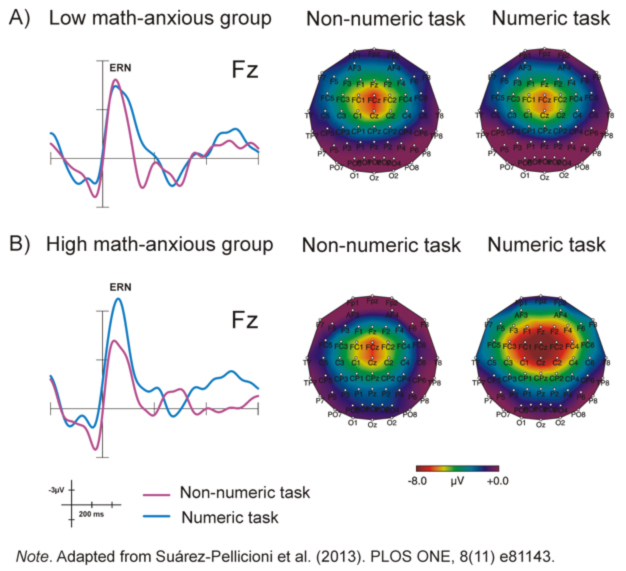PI: Maribel Nuñez-Peña
Which are the neural and cognitive mechanisms underlying mathematical thinking? Here at Brainlab, we study the cognitive processes involved in the processing of numerical information by recording brain activity and behavioral measures. Our current project supported by the Spanish Ministry of Economy and Competitiveness PSI2015-69915-R (MINECO-FEDER) aims at studying whether a deficit in spatial processing could be a possible factor contributing to the development of math anxiety. Mathematics anxiety is defined as a feeling of tension, apprehension and even fear, ranging from mild discomfort to extreme avoidance, which interferes with the ordinary manipulation of numbers and the solving of math problems. Given the negative impact of math anxiety on mathematical learning and professional development, and the high prevalence of math anxiety in society, it is important to study potential factors that can originate and maintain math anxiety. We have found an abnormal error monitoring in individuals high in math anxiety, suggesting that they are hypersensitive to self-generated errors in numerical tasks (Suárez-Pellicioni et al. 2013, PLoS ONE) and, we have also reported that high math-anxious individuals have a less precise representation of numerical magnitude than their low math-anxious peers (Núñez-Peña & Suárez-Pellicioni, 2014). Moreover, math anxiety has been found to be related to a reactive and compensatory recruitment of attentional control, which is exerted only when conflict is found in processing (Suárez-Pellicioni et al. 2014, PLoS ONE). Understanding the numerical processing difficulties of highly math-anxious individuals can be useful to assist educators in designing programs for the prevention and early detection of math anxiety while, at the same time, suggesting ways to generally improve mathematics competency in individuals high in math anxiety.


